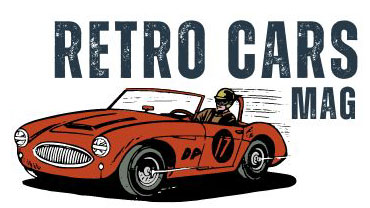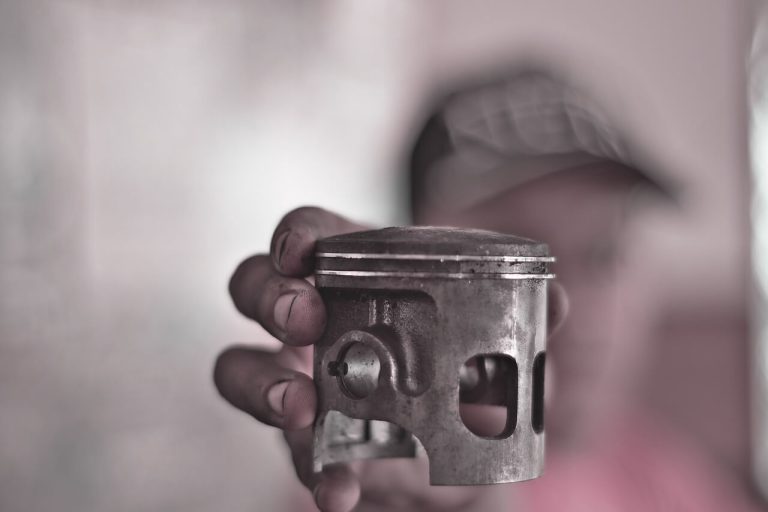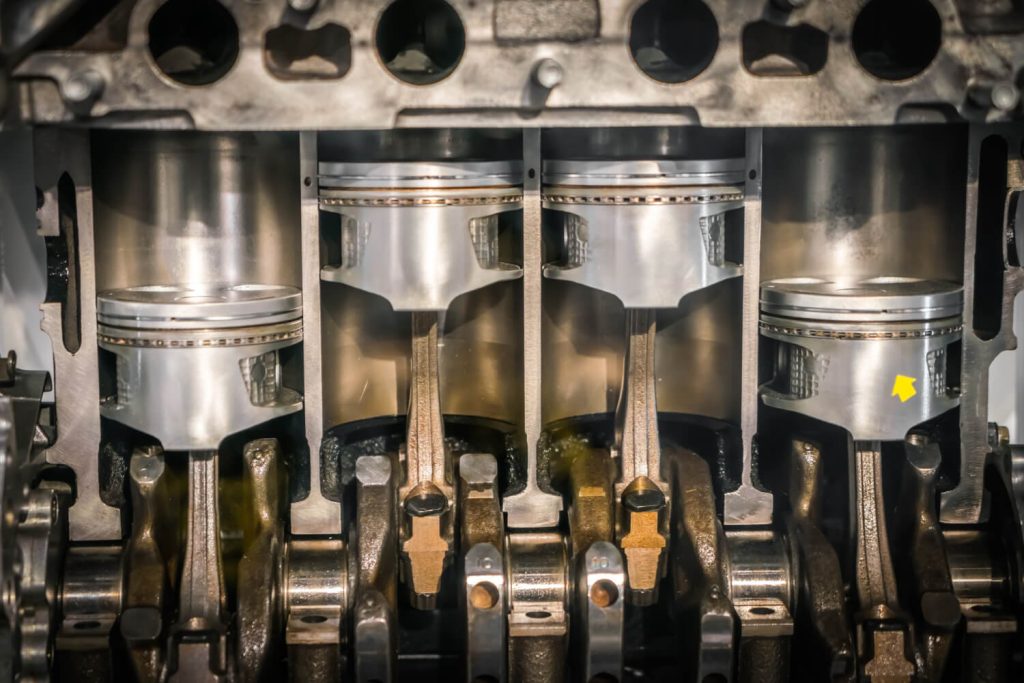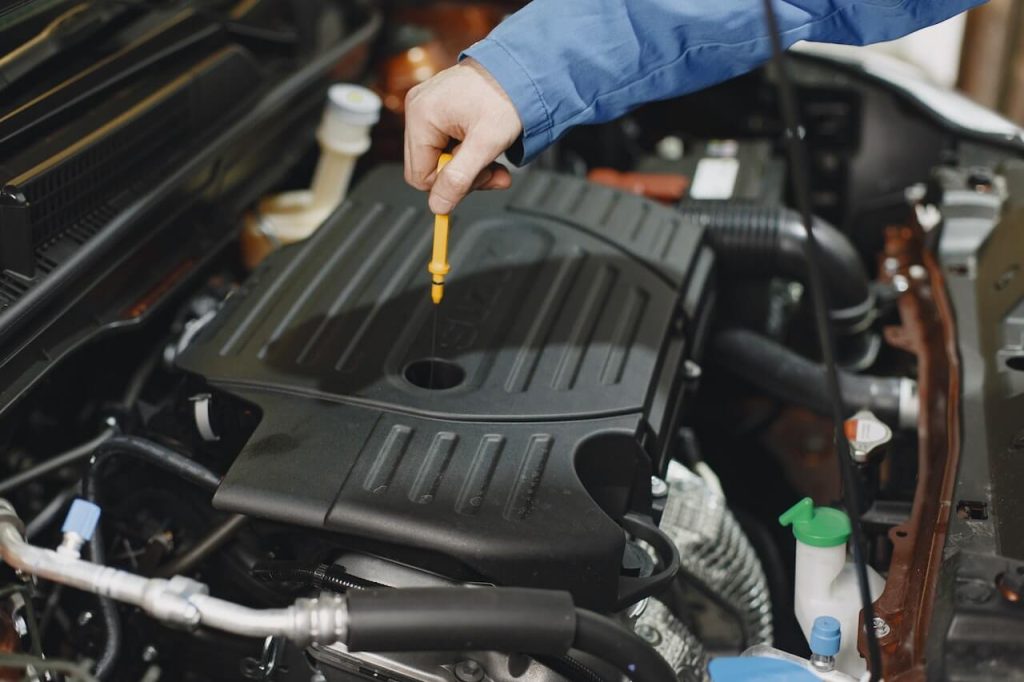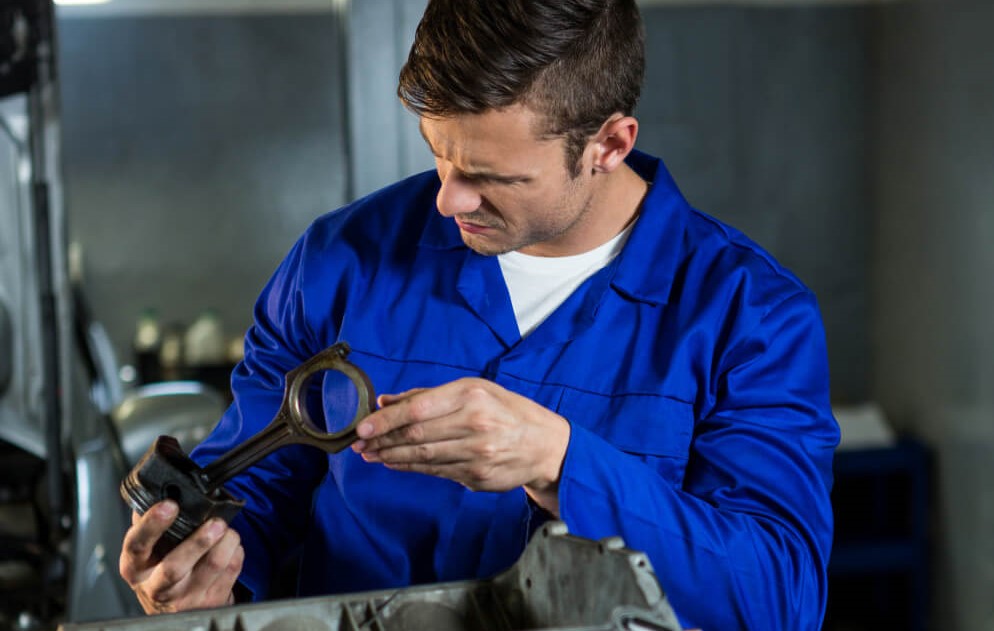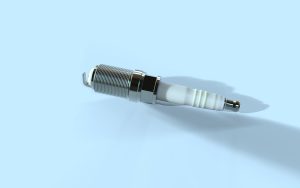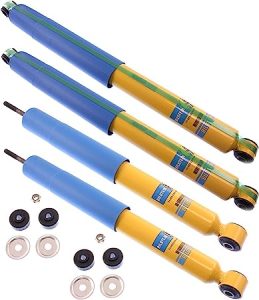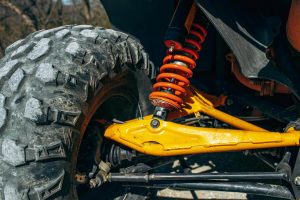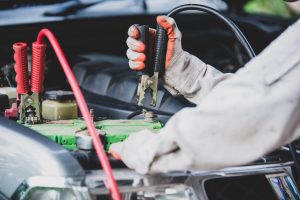As an automobile owner, you’ve probably heard the term “piston rings,” but you may not know exactly what they are or why they’re essential. Piston rings are thin metal rings that seal the gap between the piston and cylinder walls to create compression in the engine. They not only help to maintain engine performance but also prevent oil from leaking into the combustion chamber.
When piston rings begin to wear down, piston rings can become worn, damaged or broken. If they fail to function effectively, oil can leak into the combustion chamber, leading to several issues, such as smoke emissions, reduced engine power, and even engine failure.
Ignoring this issue can cause significant engine damage, leading to expensive repairs or replacing the entire engine. To avoid substantial engine damage, fixing bad piston rings is crucial. It’s essential to detect your vehicle’s piston ring problems and take appropriate action promptly.
However, replacing piston rings is a job that requires expertise and specialized equipment, so it can be costly. Additionally, not everyone has the time or resources to have their vehicle out of commission for days or even weeks until the repair is completed. That’s why temporary fix for bad piston rings can be a lifesaver for those who need to get back on the road as quickly as possible.
In this article, we’ll discuss the signs of bad piston rings, the temporary fix for bad piston rings, and how to replace them if necessary. We’ll also provide tips for preventing piston ring damage in the future. Continue reading to learn more about this matter.
Table of Contents
ToggleUnderstanding Piston Rings
Piston rings are a crucial part of any combustion engine. They play a vital role in ensuring the engine runs efficiently and does not cause any unnecessary damage. Understanding piston rings and their function is key to maintaining and repairing engines. Let’s take a closer look.
Types of piston rings
There are different types of piston rings, each with a unique function and structure. Here’s a quick overview of the most common types:
Compression Rings
Compression rings, also known as pressure rings, sit at the top of the piston. Their primary function is to seal the combustion chamber, preventing gas from escaping. The compression ring is designed to withstand high temperatures and pressure, making it a crucial component of any combustion engine. Compression rings are typically made of cast iron, steel, or ceramic. They can also be coated with a layer of chrome or nitride to improve their durability and resistance to wear.
When the piston moves up and down within the cylinder, the compression ring creates a tight seal that prevents gas from escaping and ensures efficient engine performance. Compression rings play a vital role in ensuring that the correct compression ratio is maintained in the combustion chamber, which is essential for efficient and safe combustion.
Oil Control Rings
Oil control rings, also known as scraper rings, sit below the compression ring and above the piston skirt. Their primary function is to control the amount of oil present on the cylinder walls. Oil control rings are made of materials such as stainless steel, cast iron, and chrome-plated steel. They are designed to be flexible, allowing them to conform to the shape of the cylinder walls but also strong enough to scrape away any excess oil.
The oil control ring sits in the piston groove, forming a seal with the cylinder wall. As the piston moves up and down within the cylinder, the oil control ring scrapes away any excess oil and transports it back to the oil pan. This ensures that only the required amount of lubrication is present on the cylinder walls, preventing damage to the engine.
Wiper Rings
Wiper rings, also known as oil rings, sit at the bottom of the piston. Their primary function is to remove any remaining oil from the cylinder walls that the oil control rings may have missed. Wiper rings are made of a flexible material such as steel or cast iron, with a thin chrome or nitride coating layer to improve their wear resistance.
When the piston moves down within the cylinder, the wiper ring collects any remaining oil and transports it back to the oil pan. This ensures that no excess oil is left on the cylinder walls, preventing damage to the engine.
How piston rings work?
Piston rings work by creating a seal between the piston and cylinder walls, preventing combustion gases from escaping. The rings must be strong enough to withstand high temperatures and pressures generated by combustion. Compression rings create a seal by pressing against the cylinder wall to make a tight seal. They are designed to withstand high temperatures and pressures and prevent combustion gases from escaping into the crankcase.
Oil control rings regulate the amount of oil on the cylinder wall by scraping away excess oil, preventing excess consumption and improving engine efficiency. Wiper rings are responsible for controlling the amount of oil left on the cylinder wall by any oil control rings.
They provide an excellent barrier to retain the oil on the cylinder while preserving a thin film of oil that lubricates the piston. Without these rings, excessive oil consumption, increased emissions, and reduced engine performance would occur. Therefore, piston rings are responsible for maintaining proper engine performance and longevity.
Common piston ring problems
Despite being critical components of an internal combustion engine, piston rings can experience several problems that can affect engine performance. Here are some of the most common piston ring problems:
Blow-By
Blow-by occurs when the combustion gases escape past the piston rings and into the crankcase. This can cause the engine to run poorly, create excessive exhaust emissions, and reduce power output. Blow-by is typically caused by worn or damaged rings, cylinder wall damage, or high engine temperatures.
Oil Consumption
Oil consumption is when oil enters the combustion chamber and is burned along with the fuel. This can cause the engine to smoke, consume oil at an excessive rate, and reduce fuel economy. Oil consumption is typically caused by worn or damaged oil control rings, high oil pressure, or poor oil viscosity.
Loss of Compression
Loss of compression is when the piston rings become worn or damaged and can no longer create a seal between the piston and the cylinder wall. This can cause a loss of power and poor engine performance. Loss of compression is typically caused by worn or damaged compression rings, cylinder wall damage, or high engine temperatures.
Excessive Oil on Spark Plugs
If there’s too much oil in the combustion chamber, it can accumulate on the spark plugs, reducing their effectiveness. This can lead to misfires, engine hesitation, and decreased performance. Excessive oil on spark plugs can be caused by worn or damaged piston rings or valve seals.
Engine Knocking
Engine knocking or pinging is a sound that resembles tapping, rattling, or knocking. Various reasons, such as low-octane fuel or worn-out piston rings can cause this issue. If the piston rings aren’t forming a tight seal around the piston and cylinder walls, this results in incomplete combustion that causes engine knocking.
Also Read: Temporary Fuel Pump Fix
How to Tell if Piston Rings Are Bad?
There are several ways to tell if the piston rings are wrong and need to be replaced. Here are some of the most common signs:
Excessive Oil Consumption
If you find yourself constantly filling up your oil tank, your piston rings may be wrong. These rings prevent oil from entering the combustion chamber, so if they are worn out, oil escapes into the combustion chamber, where it burns and produces the visible blue smoke from the exhaust. The oil burn also affects the engine’s oil pressure, which eventually triggers the oil light or warning.
Decreased Power and Acceleration
Another sign of lousy piston rings is the loss of power and acceleration, where the engine struggles to pick up speed, especially when driving uphill or with a heavy payload. This happens because the compression that the piston ring creates during combustion leaks out, resulting in a loss of engine power, acceleration, and torque.
Smoke from the Exhaust
As mentioned earlier, bad piston rings can cause blue smoke to emit from the exhaust. This is because of the burning oil that enters the combustion chamber due to worn-out piston rings. It’s essential to note that white smoke could also mean other engine issues like coolant leaks, whereas black smoke could indicate a fuel-related problem.
Spark Plug Fouling
Faulty piston rings can also cause spark plug fouling, leading to poor performance and engine misfires. When the rings are worn out, they can’t seal the combustion chamber completely, allowing oil and fuel to mix together and leave deposits on the spark plugs. This results in difficulty starting the car, poor fuel economy, and decreased engine power.
Metallic Knocking Noise
Last but not least, piston rings can also cause a loud knocking noise from the engine. The noise may come from different engine parts in various sizes and volumes, but it always signifies an issue with engine compression. When the piston rings fail, it causes a gap between the cylinder and piston, leading to an audible impact when the engine runs.
Causes of Bad Piston Rings
The signs of bad piston rings are easy to spot, such as smoke from the exhaust, decreased power, and visible oil leaks. But, understanding the root causes of these issues is crucial to permanent or temporary fix for bad piston rings. The most common causes of bad piston rings are:
Engine Overheating
One of the primary causes of piston ring failure is engine overheating. High temperatures can cause thermal damage to the rings, leading to seal failure or oil leakage. Overheating may occur due to coolant system failures, low coolant levels, or excessive engine load. To prevent piston ring failures due to engine overheating, ensure that your engine is maintained correctly and does not operate at extreme temperatures.
Improper Installation
Piston rings that are misaligned or improperly installed are susceptible to faster wear and tear, leading to leakage and reduced engine power. Installing piston rings requires precision, and failure to do so correctly could result in significant engine damage. It’s essential to read the manual carefully or have a professional perform the installation to ensure the process is being done correctly.
Excessive Wear and Tear
Piston rings function under constant pressure, heat, and motion, and their performance begins to decline with age. As piston rings wear, they can start to lose their ability to seal the combustion chamber, allowing oil to leak into the chamber and reducing engine performance. The wear and tear may occur due to age, misalignment, contamination, or other factors.
Poor Engine Maintenance
Regular maintenance is critical to keeping the engine healthy, and lack of maintenance can cause damage to vital engine components, including piston rings. Infrequent oil changes or failure to replace critical parts such as air filters can lead to reduced engine performance, corrosion, pollution, and, in turn, increase the wear and tear on piston rings.
Low-Quality Fuel or Oil
Using low-quality fuel or oil can cause significant piston ring failures. Fuel that is incompatible or contains dirt or impurities can wear down the rings, leading to seal failure. At the same time, low-quality oils may not lubricate the piston rings efficiently, causing increased friction and wear. Like engines, oils also have grade types, and choosing the incorrect grade may be detrimental to the engine’s parts, including the piston rings.
Faulty Spark Plugs or Ignition System
Misfiring engines may exhibit premature ring wear, leading to other engine abnormalities. Poor combustion can result from faulty spark plugs or ignition systems, leading to increased wear on the piston rings. Regular maintenance, replacement of defective components, and proper tuning of the ignition system can prevent premature piston ring failure.
Temporary Fix for Bad Piston Rings
When your engine exhibits the signs of bad piston rings, it’s crucial to take action immediately to avoid further damage. Here are some temporary fixes that can help restore the performance of your engine:
Oil Additives
Certain oil additives are designed to reduce oil consumption and improve compression, making them a popular temporary fix for bad piston rings. These additives help reduce friction and wear on the rings, which can lead to improved performance. However, be sure to choose the right type of oil additive for your engine and follow the instructions carefully.
Using Thicker Oil
Using thicker oil than the recommended grade can help improve compression and reduce oil consumption. More viscous oil can also help to fill the gaps around the piston rings, which may help to temporarily improve their sealing ability. However, using excessively thick oil can also cause problems, particularly in cold weather.
Using Seafoam
Seafoam is a famous engine cleaning agent that can be used to help remove carbon deposits and other buildup in the engine. While it’s not specifically designed to fix bad piston rings, using Seafoam can help to improve engine performance and reduce oil consumption by ensuring that the rings are able to move freely.
High Mileage Oil
High mileage oil is designed for vehicles with high mileage or engines that have started to show signs of wear and tear. This type of oil typically contains additives that can help to reduce oil consumption and improve engine performance.
Engine Cleaning Agents
Cleaning the engine with engine cleaning agents can temporarily help fix bad piston rings. These agents help eliminate contaminants such as dirt, soot, or debris that might be blocking the piston rings, causing them to malfunction.
Also Read: Can you Put Oil in A Hot Engine
How Effective Are Temporary Fixes for Engine Problems?
When faced with engine problems, temporary fixes can be a convenient way to extend the life of your vehicle and reduce the need for costly repairs. However, before you begin using any temporary fix, it’s essential to understand their pros and cons and how long they last.
Pros of Temporary Fixes
- Cost-effective: Temporary fixes are often less expensive than purchasing new parts or significant repairs.
- Convenient: You can carry out most temporary fixes at home without visiting an auto mechanic.
- Easy to use: Most temporary fixes require only basic maintenance skills and little to no technical knowledge.
- Can provide temporary relief: Temporary fixes can provide relief from engine problems, allowing you to use your vehicle for more extended periods.
- Can prevent additional damage: Temporary fixes can prevent further damage to your engine, primarily if used appropriately and quickly.
Cons of Temporary Fixes
- Not a permanent solution: Temporary fixes are not a permanent solution, and the problem may recur within a short time.
- Can hide underlying problems: Temporary fixes can mask the underlying issue, delaying essential repairs that may lead to more damage to your engine.
- Can cause more severe issues: Using some temporary fixes, such as thicker oil than recommended, can cause severe problems like clogging of engine passages.
- Do not address the root problem: Temporary fixes just treat the symptoms without addressing the root of the problem.
Duration of Temporary Fixes
The duration of temporary fixes varies by the type of the fix, the severity of the problem, and the type of engine. For instance, temporary fixes such as adding oil additives, using thicker oil, using sealants, or using engine cleaners can provide a few weeks to a few months of relief. Most automotive experts, however, consider any vehicle over 100,000 miles as too old to rely solely on temporary fixes.
Replacing Piston Rings
The only permanent solution to bad piston rings is to replace them. This can be done either professionally or by a knowledgeable DIYer. Replacing the piston rings requires dismantling and disassembling the engine, so it’s crucial that you have a thorough understanding of the engine components before attempting this job. Let’s take a look at the process and cost involved in replacing piston rings.
Process of Replacing Piston Rings
Replacing piston rings is a complicated process and requires precision and specialized tools. Here are the basic steps involved in a piston ring replacement:
- Remove the Engine
The engine or the entire block needs to be removed and disassembled to access the piston rings.
- Remove the Piston
The piston needs to be carefully removed from the engine block without damaging other components. This process involves removing the connecting rod caps, loosening the piston pin, and finally removing the piston from the connecting rod.
- Inspect the Piston Rings
Once you’ve removed the piston from the engine block, the next step is to inspect the piston rings for signs of wear, damage, or bending. Damaged or worn rings require replacement, while bent rings require repositioning or straightening.
- Clean the Piston Rings
After inspecting the piston rings, the next step is to clean them. You can use a ring cleaner, solvent, or hot soapy water to clean the rings adequately.
- Replace the Rings
Once you’ve cleaned the piston rings, the next step is to replace the damaged or worn rings. After installing the new rings, you’ll need to ensure that they are correctly aligned and secured.
- Reassemble the Engine
Once you’ve replaced the piston rings, the next step is to reassemble the engine. You’ll need to install the piston back into the engine block, reattach the connecting rod caps, and replace any other parts you may have removed.
Cost of Piston Ring Replacement
The cost of piston ring replacement can vary depending on several factors, such as the make and model of your car, the extent of the damage, and the mechanic’s labour rates. On average, the cost of replacing piston rings is typically between $1500 and $5000, including the costs of parts and labour.
Tips to Avoid Piston Ring Problems
To avoid costly repairs and maximize engine performance, it’s important to take steps to prevent piston ring problems from occurring in the first place. Here are a few tips that will help you keep your car’s engine running smoothly:
Regular oil changes
The oil in your car’s engine is responsible for lubricating the various moving parts and reducing friction. However, oil can become contaminated with dirt, debris, and other impurities over time, which can lead to accelerated wear and tear on the piston rings. To avoid this, it’s essential to change your car’s oil regularly. Most automakers recommend an oil change every 5000 to 7000 miles or every six months, whichever comes first. Be sure to check your vehicle owner’s manual for specific guidelines regarding your car’s oil change intervals.
Monitoring oil levels
Oil levels in your car’s engine can also play a crucial role in the longevity of the piston rings. Low oil levels can lead to increased friction between the piston rings and the cylinder walls, causing accelerated wear over time. Therefore, it’s essential to check your car’s oil levels regularly and top it up when necessary. We recommend checking your oil levels at least once a month and topping up as needed.
Avoiding harsh driving conditions
Another essential measure to prevent piston ring problems is to avoid harsh driving conditions as much as possible. This includes not only aggressive driving but also driving in extreme temperatures or conditions. For example, If you reside in a region where the temperature stays consistently high, parking your car in the shade will help keep the engine from overheating. Similarly, if you want to keep your engine in good shape, you shouldn’t drive on crappy roads or through holes.
Regular engine inspections
Finally, regular engine inspections can go a long way in preventing piston ring problems. It’s best to have your car’s engine checked by a qualified mechanic at least once a year or as recommended by the automaker. During these inspections, the mechanic can look for signs of wear and tear on the piston rings and other vital components, allowing you to catch and address any issues early on.
Frequently Asked Questions
How to replace piston rings without removing the engine?
To replace piston rings without removing the engine, you can access the pistons by removing the cylinder head or oil pan. Then, remove the old piston rings using a piston ring removal tool and install new ones as per the manufacturer’s instructions.
Finally, reassemble the engine, and take the vehicle for a test drive to ensure there are no issues. Keep in mind that this process can be challenging and should only be attempted by experienced individuals or professional mechanics.
How long can I drive with bad piston rings?
The length of time you can safely drive with bad piston rings varies depending on the severity of the problem and whether the engine oil has been contaminated with combustion gases.
In general, it is not recommended to continue driving with bad piston rings as it can lead to significant engine damage over time. It’s best to have your engine inspected by a qualified mechanic as soon as you notice any symptoms of bad piston rings.
How to get oil out of the spark plug well?
Here’s how to get oil out of a spark plug well:
- Begin by removing the spark plug using a spark plug socket and wrench. Use a rag to clean any residue from the spark plug before setting it aside.
- Next, inspect the spark plug well and surrounding components for any damage or wear.
- If excessive oil is present in the spark plug well, use a small hand pump or bulb syringe to suction the oil out of the well. You may also use a clean rag or paper towel to absorb the oil.
- Once the oil has been removed, clean the spark plug well using a spray electrical contact cleaner or carburetor cleaner. Avoid getting any cleaning solution on the spark plug or other components.
- After cleaning, reinsert the spark plug into the well.
- If excessive oil continues to appear in the spark plug well, it may be an indication of deeper engine problems. Have the engine inspected by a qualified mechanic to determine the cause of the issue.
Note: It is important to replace any damaged or worn components as needed to prevent future oil leaks in the spark plug well.
How to clean piston rings without removing them?
It is not possible to clean piston rings without removing them from the engine. The only way to clean them is to remove the piston from the engine and clean the rings manually. However, adding fuel injector cleaner to the engine oil or performing a top engine clean can help prevent carbon buildup on piston rings.
What is the best oil to unstick piston rings?
To unstick piston rings, the best oil to use is a penetrating oil such as Marvel Mystery Oil or PB B’laster. These oils are formulated with special additives that help break down and dissolve the carbon deposits that are causing the piston rings to stick. It’s important to note that while penetrating oils may help unstick piston rings and restore engine performance, they are not a substitute for proper engine maintenance and repair. Always follow the manufacturer’s recommendations for engine oil and maintenance.
Conclusion
Bad piston rings can cause severe engine damage if left unchecked. However, there are some temporary fixes that you can use to diagnose and address the issue without needing to remove the engine. If your vehicle is showing signs of bad piston rings, it is crucial to have your engine checked as soon as possible by a qualified mechanic. Proper maintenance and using the right oil to unstick piston rings can also help prevent future problems.
Always remember to follow proper safety protocols when working on the engine and consult a professional mechanic if needed. With the appropriate knowledge, tools, and maintenance, you can keep your vehicle running smoothly and safely. Hope these temporary fix for bad piston rings make your car run until complete replacement.
